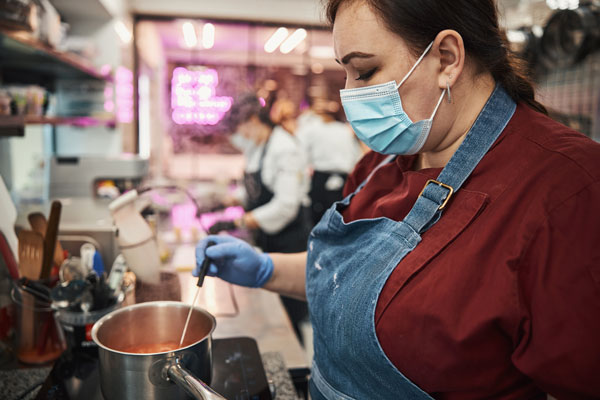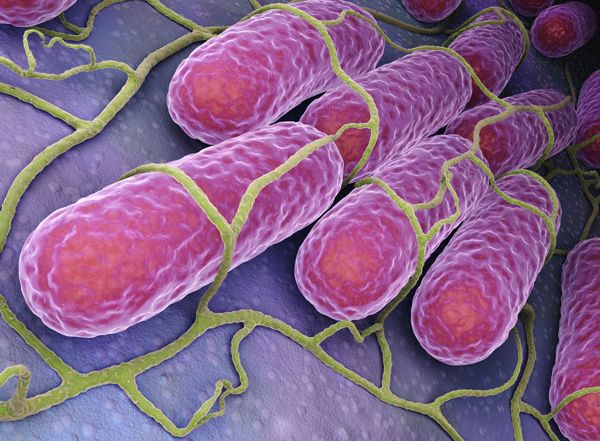Achieving Food Safety Vision 2020
Once you have a vision of what your 2020 Food Safety Program should be, it is time to implement that vision. Some of you may already have a great food safety program that just needs some tweaks. Others may not have a formal food safety program. Whatever your situation, here are some ideas for achieving a good food safety vision.
First, take small steps in implementing your plan. Workers may resist massive changes to their work routine, so start with a small, but important practice. Your first emphasis might be on handwashing if you observe that employees are just not doing enough handwashing or not doing it correctly. After all, that may be the most basic and important behavior for employees. This time of year, the flu virus is rampant so you can use that as one rationale for increasing the frequency of handwashing.
Second, be a role model for food safety. I remember growing up with the adage “What you do speaks so loudly I can’t hear a thing you say.” In other words, the management team should practice what is preached and “walk the talk”. Because handwashing is fundamental, this behavior should be modeled. Every time a supervisor walks into a kitchen, that individual should wash hands. Every Single Time! Even if that person does not plan to handle any food and even if the visit is short, handwashing should be done. Taking the time to model this behavior reinforces that handwashing is important—and employees ARE watching.
Third, train employees on the how and why of following food safety practices. We don’t think training should only focus on what and how you want something done, but also on the why it is important. What is the link to food safety? What outcomes do you get if you implement or if you do NOT implement the behavior? Make it personal by connecting the dots of what could happen if there were a foodborne illness because safe food practices were not followed. Emphasize that the right way is the best way. The training can be an informal one minute reminder or a scheduled 30-minute session for everyone but the information should be consistent! See past blogs and webinars on this topic.
Fourth, follow-up with employees after training. Sometimes we train employees and assume that they will just go off and immediately put this information into practice. In reality, that does not happen. New procedures might require a change in routine or take more time. So the follow-up is important. Remember the term “active managerial control’? That means supervisors are actively involved in implementing the food safety program and holding employees accountable for following correct practices. We have also introduced the term “management by walking around”—managers must observe to make sure food safety behaviors are practiced and correct unsafe behaviors.
Fifth, reward good food safety practices. Rewards can be as simple as an “atta-boy/girl”, after all, everyone likes to be complimented on a job well done. Food safety should be part of performance reviews as well. You could even have a food safety award each quarter, including a small cash bonus. That would elevate food safety and, perhaps, make employees more aware of its importance.
The bottom line is that thinking about what you want to accomplish with your food safety program, and developing a plan will affect your bottom line! Food safety is as basic as food quality and cost control. All of these outcomes must be recalibrated from time to time. Making sure the 2020 Vision for Food Safety is practiced is an important element of an operation’s success. Risk Nothing!
READ MORE POSTS
Food Traceability in Foodservice Operations: An Essential, and Soon-to-be Required, Component of your Food Safety Plan
In June, I discussed the importance of having a solid food defense plan, and I provided you some resources for developing or strengthening your food defense plan. As I was writing those blogs, my mind kept turning toward food traceability. While they are distinctly different concepts, food traceability goes hand-in-hand with a food defense program. I would argue for your food defense plan to be effective, you must have an effective internal food traceability program, where you can trace the product back to the supplier (backward traceability), but also be able to trace the product from the supplier to the guest who was served the product (forward traceability).
Food Defense Plan Resources – at just the right price…
Earlier in the month, I discussed the importance of having a solid food defense plan in place for your foodservice operation. Even if the first version of your plan is not perfect, it is a start. Having plans down on paper will force you to think through the process and ensure the vulnerable points where opportunities exist for possible contamination within the operation are mitigated.
Don’t Turn a Blind Eye to Your Food Defense Practices
Late last week, as I mindlessly scrolled through Twitter, I ran across a Tweet suggesting the #IceCreamChallenge from summer 2019 was the real cause of the Coronavirus spread. Of course, the Tweet was made tongue in cheek, but it did cause me to reflect on that challenge, which had a short life on social media in the summer of 2019.
Salmonella and Listeria monocytogenes: Serious Threats to the Safety of Food
Earlier in the month, I mentioned the top microbial enemies we all face in foodservice operations, E. coli, Campylobacter, Salmonella, and Listeria monocytogenes. While we discussed E. coli and Campylobacter, we did not get around to discussing Salmonella or Listeria monocytogenes.










